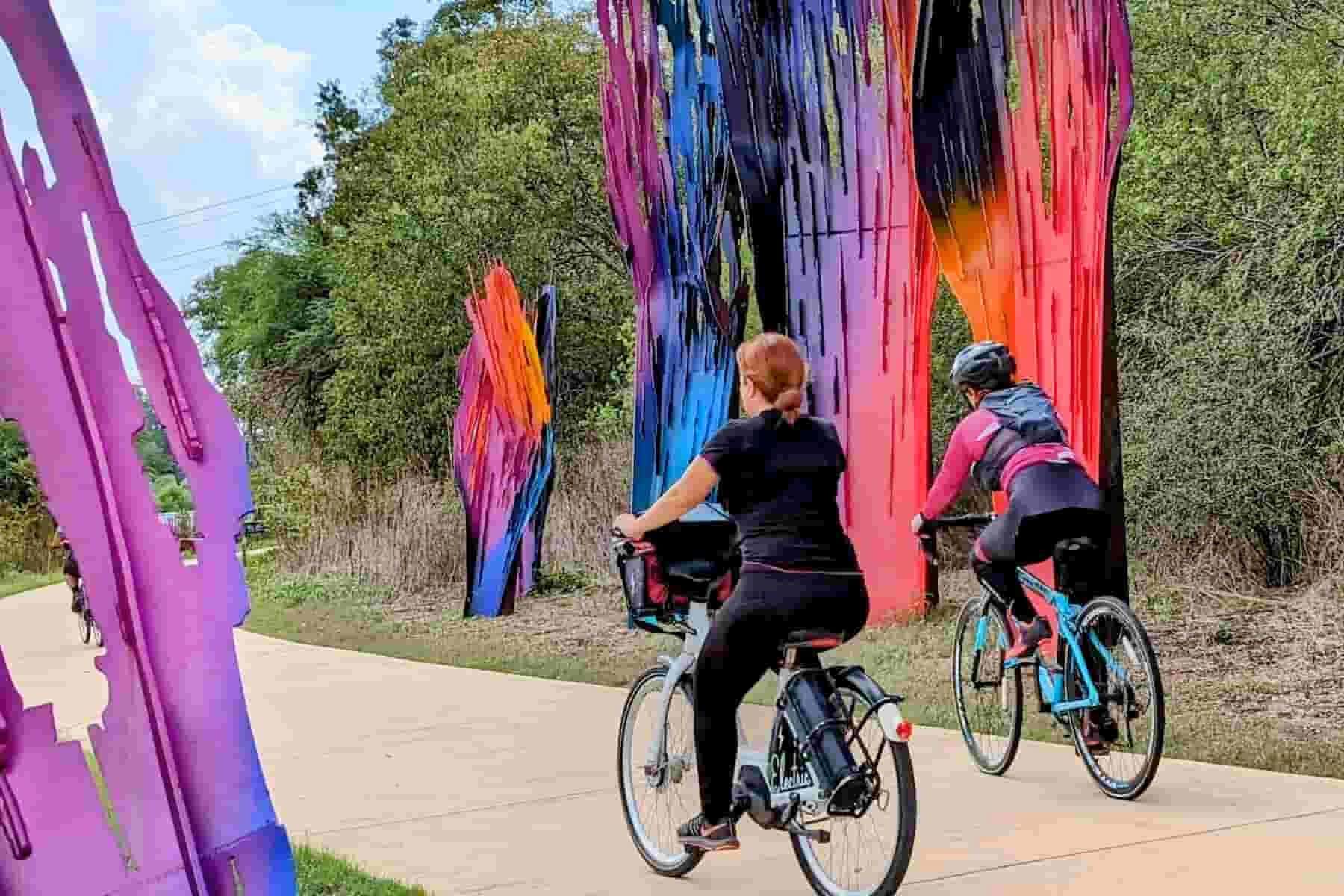
Go World Travel is reader-supported and may earn a commission from purchases made through links in this piece.
To understand the history and culture around San Antonio, it’s important to forget the Alamo.
I don’t mean to disparage the memory of the 150 or so brave Anglo fighters who in 1836 withstood a 13-day siege by thousands of Mexican soldiers before being wiped out.
But if you want a deeper dive into the region’s history, head out to the four 18th-century Spanish missions laid out along a ten-mile route running south along the San Antonio River.
The San Antonio Missions: UNESCO and the Colonial Story
The structures together comprise one of the only 25 UNESCO World Heritage Sites in the U.S., a peer group that includes the Statue of Liberty, the Grand Canyon, and Thomas Jefferson’s Monticello.
Best Tips & Tools to Plan Your Trip
The missions tell the story of a time when European monarchies were trying to extend their influence and religions across the New World, creating conflict with the indigenous population, Anglo settlers, and other kingdoms. The mission communities created unique, blended cultures that have shaped central Texas in a way that’s still playing out today.
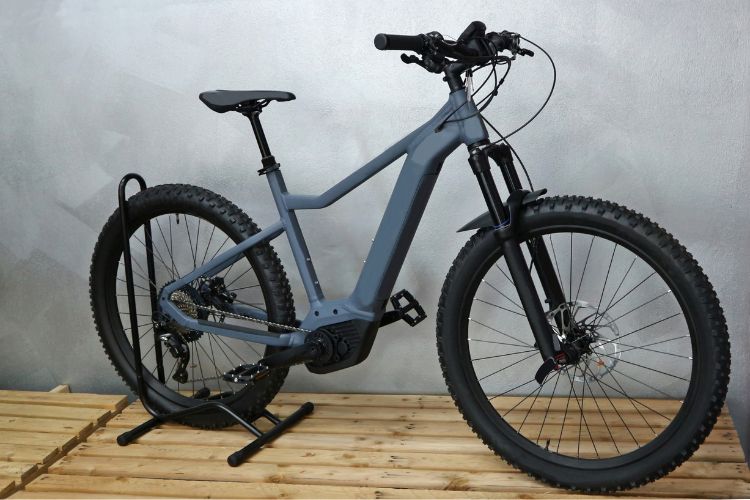
The Spanish Missions by E-bike
And now, more than 300 years after the first mission was built, it’s possible to take in all of this via the modern conveyance of an e-bike, which you can rent from a dock just about anywhere in San Antonio.
If you haven’t had the pleasure, e-bikes have small motors that provide a gentle assist, making any hills a breeze and speeding you along the route. This is no-sweat bike touring.
The result is a half (or full) day of fascinating cultural exploration, assisted by the e-bike’s power boost, with some fresh air, beautiful riverside scenery, and light exercise thrown in.
As a bonus, by biking instead of driving you can pass through neighborhoods the tourist maps won’t guide you to that tell parts of the mission story you won’t find in guidebooks. So, if you’re the type of traveler who loves a taste of the “real” culture of the places you visit, grab an e-bike from any docking station in the city, head south, and saddle up.
Mission: Possible
After you rent the BCycle (see details below), strap your cell phone to the handy tray, fire up the Google Maps app, and select bicycle navigation. You’ll be routed to a part of the River Walk just south of the downtown pedestrian gridlock.
It’s quiet here, so you can relax and take in the beauty of the waterway, the neighborhoods framing it, and the native plantings along the path.
Within about a mile, you’ll hit an open trail. You’re still on the River Walk — and you’ll remain so the entire time. But, as you continue the river itself winds away from the pavement, separated by an abundant environmental buffer. On the water, you may spot brave-soul kayakers who use the river to tour the missions.
After about 15 minutes of riding, you’ll come to Mission Concepcion. Dock your bike to start your first exploration.
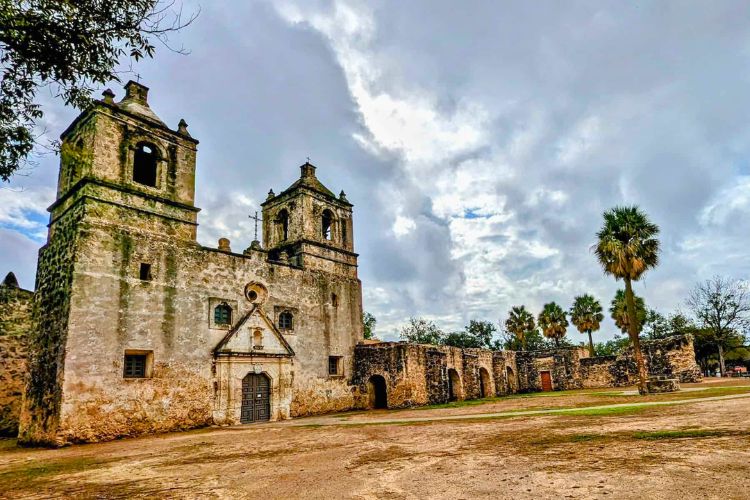
Mission Concepcion: Frozen in Time
Established at this location in 1731 and finished in 1755, the Mission Concepcion is the least renovated of the four missions. This is a good thing.
The stone walls and roof, built directly on bedrock, have managed to withstand 268 San Antonio summers. Some of the decorative details have been lost, but what you see today is pretty much what people have seen since the 1700s. It’s considered the best-preserved Spanish colonial mission in the United States.
At Mission Concepcion Franciscan monks, Spanish settlers, and soldiers of the Crown turned to the task of recruiting the local indigenous population, largely members of the Pajalat tribe, to inhabit the new community. Like all missions, Concepcion functioned as a religious center, military outpost, small town, and farm.
The Colonialism Problem
The view of traditional Anglo and Spanish historians is that the missions offered protection, food, shelter, and education to the local population. The Pajalats’ centuries-old hunting and gathering lifestyle was under pressure from competing tribes, European settlers, and a challenging climate. This made the Pajalats willing, even grateful residents of the new community.
An opposing, currently popular interpretation is that the Spanish essentially enslaved the Pajalat, forcing them to do hard physical labor, adopt a foreign religion, and abandon their own language and centuries-old lifeways. Many died of European diseases, against which they had no immunity.
My point isn’t to resolve this dispute but to suggest that both narratives may be useful as you visit the missions. You’ll find evidence to support each one.
Inside Mission Concepcion: Carvings and Frescos
In any event, you’ll enjoy your stroll all around the Mission Concepcion complex. There’s a sanctuary, nave, convent, and granary. The details of the carvings above the front door are dulled by time, but you can still see the European-style craftsmanship around the site.
Check out the remnants of the frescoes inside, some in a European style, some with indigenous symbolism. Note that the mission remains an active parish (this is true of all four missions), so be respectful.
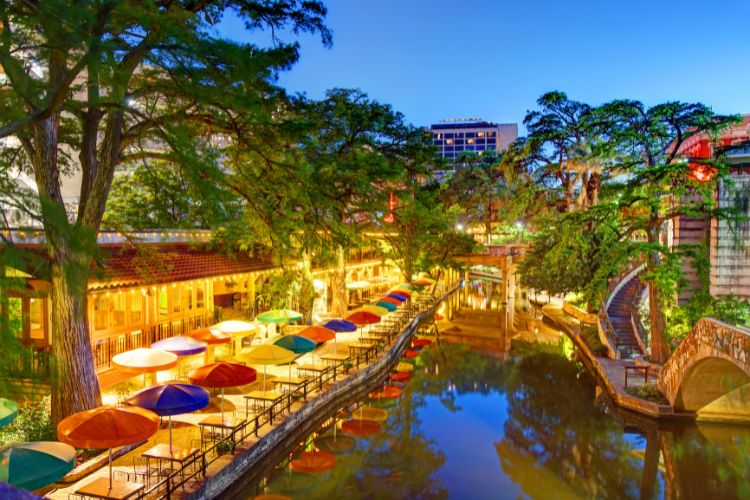
A Look at Off-the-Map San Antonio
To navigate back to the River Walk, Google will direct you along the edge of neighborhoods that, long ago, became home to the families that left the missions when they were abandoned by the Spanish.
During the time the missions thrived, there were many intermarriages between the Spanish and the indigenous population. Their children were the first “Tejanos,” a term now sometimes used to refer to any Hispanic Texan. Some of their descendants still live nearby.
I encourage you to briefly ride through the adjacent neighborhoods. (Don’t worry, Google will get you back on course.)
The “Real” San Antonio?
Some of the homes are lovingly maintained and painted in vivid colors, their front yards full of toys. Others are run-down, with plywood over the windows. Most fall somewhere in between.
I passed a chain-link fence decorated with paper flags in the colors of the Mexican flag. It surrounded the backyard of an auto repair shop that included a small “race track” for toy cars that the patrons’ kids were gleefully playing on.
I biked past two trailer parks, a Polish-American meeting hall sandwiched between. I also went by what may be the biggest barber shop I’ve ever seen, with one of those giant air-powered “fly guy” figures waving its arms in the parking lot.
The “real” San Antonio? Nothing that profound. But you’ll get to see communities where some of today’s Tejano descendants make their lives, in the shadows of their ancestors’ homes. This sort of side-trip always enhances my travels. A year from now, I suspect I’ll remember those neighborhood scenes more vividly than the architectural details of the missions themselves.
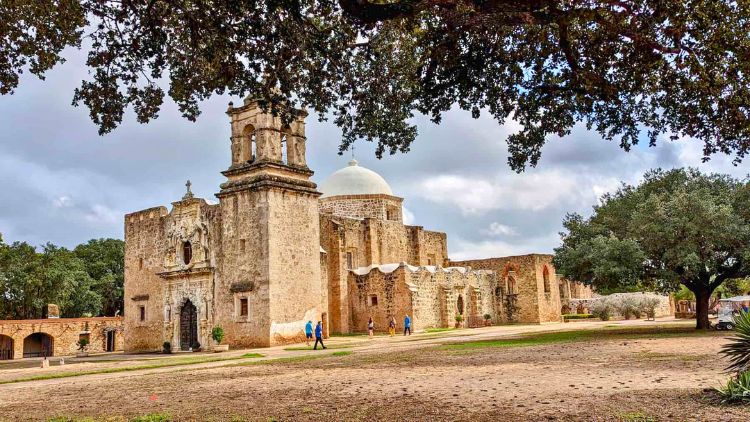
Mission San Jose: History Reconstructed
After hooking back up with the biking trail you’ll speed along for about 15 minutes before reaching Mission San Jose. If you devote extra time to any of the missions, do it here. Its perimeter walls and other structures are the most substantial. Regular tours are provided by park personnel.
It’s important to note that you’re looking at a mixture of original construction and the results of a restoration carried out in the 1930s by the Works Progress Administration. While the church itself is mostly original, many of the other buildings were constructed on top of foundations and ruins.
According to a ranger giving a tour during my visit, the intention in the ‘30s was to re-create the full 18th century Mission San Jose replica community, just as Colonial Williamsburg re-creates 18th century Virginia.
To make this happen the descendants of the indigenous population, some of whom still lived on the mission’s grounds, had to be relocated. Their removal caused controversy and pain that lingers to this day.
In any event, World War II intervened, and funding for the project dried up. What you see today is a reconstruction frozen in time.
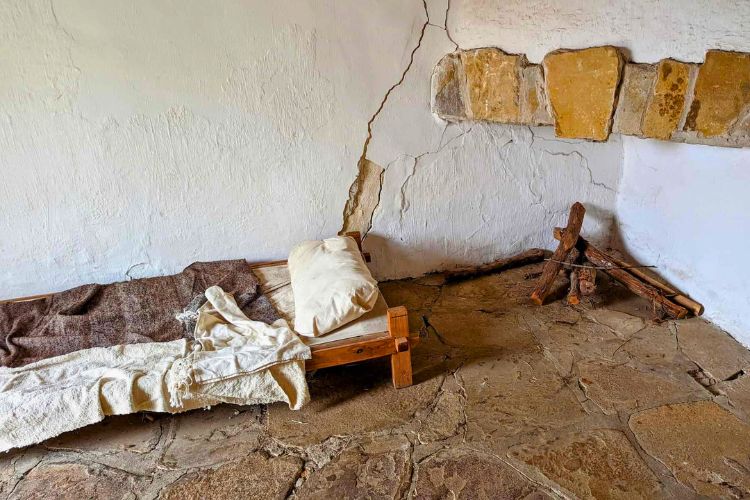
A View Into Mission Living
The best part of my visit was the opportunity to (literally) duck into the reconstructed apartments where the indigenous people lived. The one I saw consisted of three rooms, each maybe 8 feet by 10 feet. There was a bedroom, a living area, and a kitchen with a small wood-burning stove.
As many as 10 people lived there.
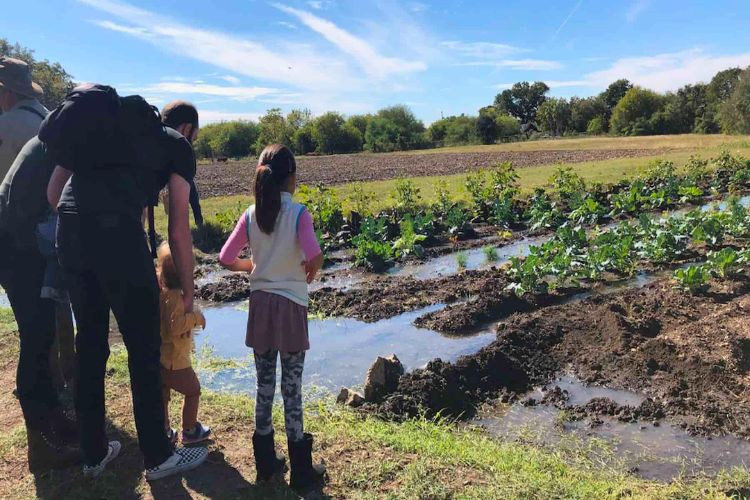
Mission San Juan: Feeding the Region
Your next stop is at Mission San Juan, which was the most agriculturally productive of all the missions, producing fruits, vegetables, and meat not only for the mission’s residents but for communities around the region and as far away as Louisiana.
While Mission San Juan itself is historically and architecturally significant, by this point you’ve seen a lot of churches and ruins of foundations. Instead, I recommend you take a small cutoff from the River Walk route and enjoy a quiet wooded trail that takes you directly to the mission’s agricultural features.
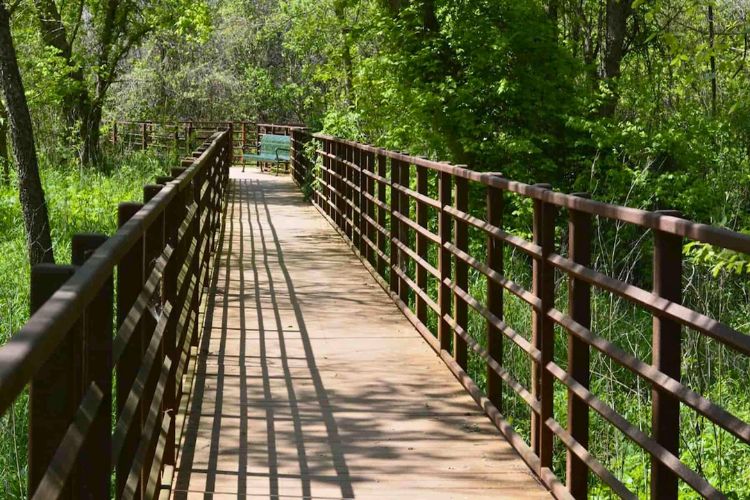
A Path Through the Woods
To do this, pass the prominent signage for the mission itself and make a turn at the San Juan Mission path. You’ll cross the river and join the shaded Yanaguana Trail, surrounded by birds and wildlife.
The trail will eventually lead you to the reconstructed aqueducts that irrigated the mission’s fields long ago. Nearby you can see a demonstration farm, established in 2012, that’s located on the same ground that was worked in the 18th century.
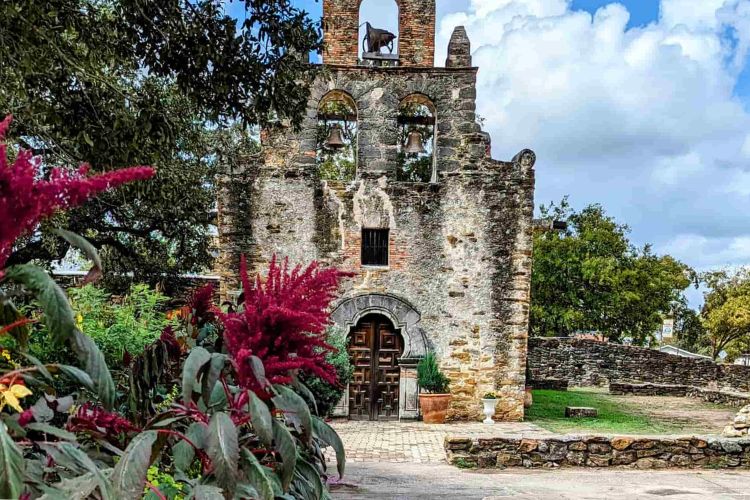
And Finally: Mission Espada
Your last stop, Mission Espada, has the most tumble-down ruins of the four communities. You can see the foundations and crumbled walls of the long-gone original church, friary, apartments, and other buildings.
And yet you’ll also see a tidy, active parish church, established in a small building well worn by the centuries. It seemed to have the most lively local religious community of the missions I visited. As I approached the church, two ladies were bringing in giant bouquets, maybe for a wedding or other celebration. They smiled as I took pictures.
It was a fitting end to my visit to the missions: evidence of deep history, amid a living community descended from it. The flowers were gorgeous.
If You Go:
You can grab a BCycle e-bike at many locations throughout San Antonio, including right in front of the Alamo. Some tips:
- Download the BCycle app before you get to the docking station, so you’re not fumbling for your credit card in the hot sun.
- You can rent two ways: By the minute or the “month.” The latter, costing $20, is probably the better choice. You won’t have an eye on the clock, plus you can jump on a bike any other time during your stay in San Antonio.
- BCycle has an app to help navigate, but I strongly recommend Google Maps set to its bicycle setting. It’s easier to see and will speak the directions for turns out loud.
- If you haven’t e-biked before, the app has a brief tutorial that’ll help you get acquainted with the bike’s power assistance.
- Bring a bottle of water and some sunscreen. The bikes have handy baskets for those and any other small things, or a backpack.
- Be sure to dock your bike at each mission, to recharge the battery and keep it secure.
- Feeling biked out? Dock your bike permanently at any of the missions and Uber back to, say, one of those restaurants on the crowded part of the River Walk. After a ride, those margaritas will be quite refreshing.
Author Bio: Craig Stoltz, a former editor of the Washington Post travel section, is a freelance writer specializing in food, drink, and travel. His writing has appeared in the Post, Travel Awaits, Food, Wine, and Travel Magazine, Savory Traveler, and his blog, www.eatdrinkgosmart.com. He lives in the Washington, D.C. area.
Read More:
- Together at Sea: A Mediterranean Family Adventure - April 27, 2024
- Travel Guide to Colorado - April 26, 2024
- Travel Guide to Croatia - April 26, 2024

